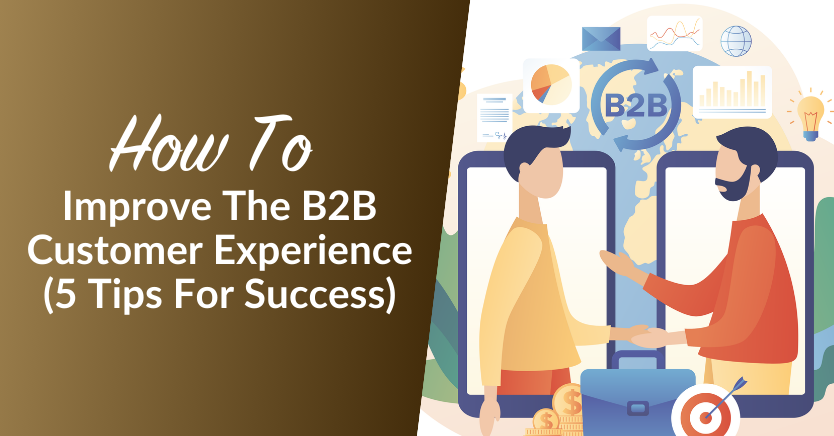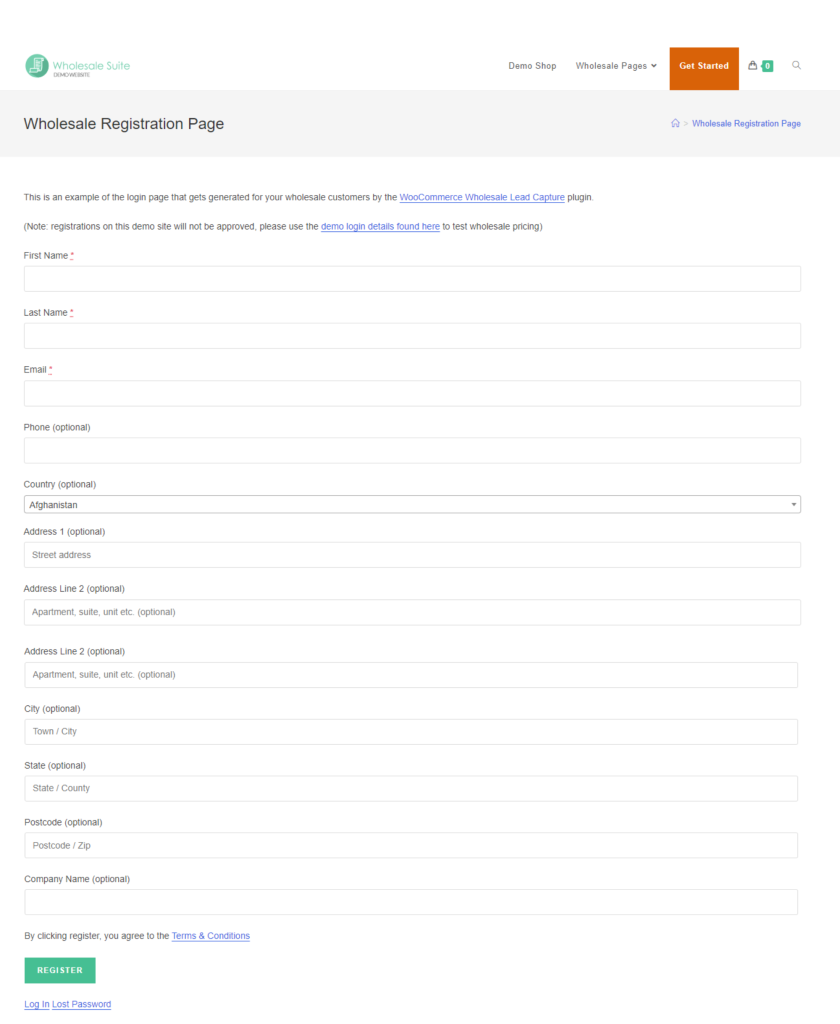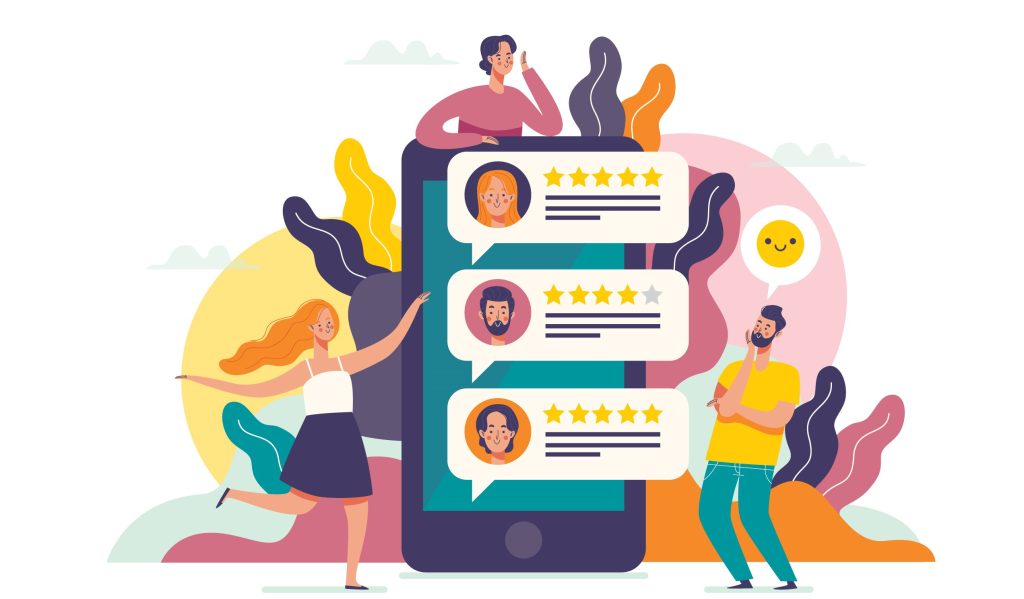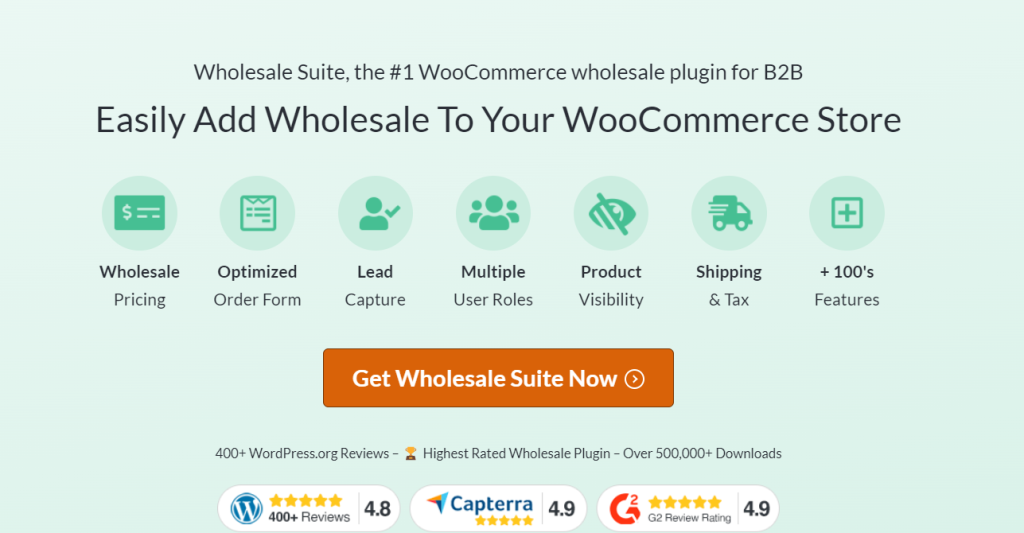
Improving the customer experience has always been at the forefront of business-to-consumer relationships. However, the times have shifted, and today’s B2B buyers expect no less. In today’s wholesale landscape, enhancing the B2B customer experience has become a competitive necessity.
The B2B customer experience encompasses every touchpoint and interaction clients have with your business. If you want to earn their trust and turn them into loyal customers, you’ll need to give them an experience that stands out in today’s competitive marketplace.
In this guide, we’ll explore actionable strategies that can help you create a 5-star B2B customer experience. From understanding their needs to ensuring smooth ordering and post-purchase, we’ll cover them all.
So, let’s get right into it!
B2C vs. B2B Customer Experience: What Are The Differences?
To provide the best customer experience for your B2B clients, it’s essential to understand some key differences between B2B and B2B customer interactions. This is especially true if you cater to both markets on your e-commerce store.
- The B2B sales decision-making process is typically more complex. Since it may involve larger orders and bigger investments, there may be multiple stakeholders involved. Consequently, clarity, transparency, and reliability are critical right from the outset.
- B2B pricing structures differ. Rather than offering fixed retail pricing, B2B pricing is often tailored to individual customers. Depending on your customer’s past purchase history or level of commitment, you may need to offer customized pricing, bulk discounts, or negotiate contract-based agreements.
- B2B buyers require specialized support that is tailored to their business requirements. Often, the products and services they purchase from you play a critical role in their own operations. As such, they’d need a reliable partner that they can account for to deliver their promises.
- Your B2B clients see you as their strategic partner, and they are typically in it for the long haul. To give them the best experience and foster loyalty, you’ll need to align with their long-term objectives and respond to their evolving needs.
Improving The B2B Customer Experience: 5 Key Tips
According to industry statistics, 80% of B2B purchases are influenced by their customer experience with a business. Today’s B2B buyers are knowledgeable and value-driven, and they expect a seamless journey when transacting with your business. Meeting these expectations can set you apart from the crowd, increase customer loyalty, and help you grow your bottom line.
In this section, we’ll provide you with actionable strategies to transform your B2B customer experience to build a thriving customer base.
1. Foster a customer-centric culture
Your B2B clients are dynamic businesses with unique needs, goals, and pain points. To give them the best experience, you’ll need to put them at the center of everything you do and understand them completely. By doing so, you can tailor your solutions, communication, and support to align with their requirements.
But how do you even begin? Right from the get-go, your B2B customers should experience a seamless onboarding process.
Consider implementing a smooth registration process that empowers you to gather essential information to serve them better. Tools like Wholesale Lead Capture allow you to implement this effortlessly. This plugin allows you to create customized B2B registration forms, enabling B2B buyers to sign up on your WooCommerce website and explore your offerings.

Map the customer journey
At the core of understanding your B2B clients is mapping the journey your customers go through and eliminating any sources of friction or delay. Consider the following steps:
- Identify key touchpoints: Where do customers find you and interact with your business? These platforms may include your website, customer support, targeted advertisements, and more.
- Determine their pain points: After identifying touchpoints, use feedback and analytics tools to learn about your customer’s pain points. For example, you might find out that your website’s ordering and checkout process for wholesale transactions is cumbersome, causing high cart abandonment.
- Improve processes: After identifying pain points, you can now take the necessary steps to improve the customer experience. In the example earlier, you can invest in technology to optimize your checkout process and make it more user-friendly.
2. Make things easy for your customers
The B2B buying experience has dramatically shifted. According to Gartner, 75% of today’s B2B buyers prefer a rep-free sales experience.
What’s more, B2B businesses are getting more comfortable making large purchases online. In fact, 70% of B2B decision-makers are open to making remote purchases in excess of $50,000, with 27 percent willing to spend more than $500,000 in an online transaction.
These compelling statistics highlight the importance of providing your B2B customers with an easy and enhanced online shopping experience. Your wholesale customers are typically busy business owners who are looking for straightforward solutions when they engage with your business. As such, you’ll want to make your products and services accessible and easy to navigate.
Here are some key steps to provide a better B2B customer experience on your website:
- Streamline ordering: Provide your wholesale customers with an intuitive and easy-to-use ordering form that showcases wholesale products and allows them to add to their cart effortlessly.
- Display B2B pricing and discounts clearly: B2B buyers are in search of the best value. As such, you’ll also want to present any special discounts or perks clearly on your website.
- Optimize for mobile: A mobile-friendly website is crucial to a smooth B2B customer experience, so ensure that your website is mobile-responsive and optimized for different devices.
- Provide resources: Product information, frequently asked questions and other relevant information should also be easily accessible on your website.
While it may seem daunting to check off all these boxes, you can leverage the power of tools and technology to implement these changes effortlessly.
Wholesale Suite, for example, provides you with an all-in-one solution to turn your WooCommerce website into a B2B store. With its trio of powerful plugins, you can easily set wholesale prices, tailor product visibility to your clients, create a streamlined ordering process, and improve customer onboarding with registration forms.
3. Be transparent and keep your promises
Being transparent and keeping your promises is crucial to building trust and improving the overall B2B customer experience. Your B2B customers rely on you to supply products that they are using in their operations or selling to their target market. Therefore, they trust you to deliver their orders accurately, on time, and on excellent condition.
This transparency begins the moment they engage with your business. Here are some key things to keep in mind:
- Make sure that you display your wholesale prices accurately. This helps your buyers make informed decisions that match their needs and budget. Any discrepancy in pricing along the purchase process can erode trust.
- Ensure that your product descriptions are accurate and detailed. By doing so, you instill confidence in your B2B customers.
- Provide your wholesale buyers with clear and realistic delivery timelines. Keep them updated about the progress of their orders, from purchase confirmation to shipment and delivery.
- Communicate your return and refund policies, and make it easy for B2B customers to initiate returns or exchanges if necessary.
4. Listen to your customers and act on feedback
Customer feedback provides valuable insights that tell you what you’re doing right and what needs to be improved. This is why actively collecting, listening, and acting on feedback is critical to improving the B2B customer experience.

To harness the power of feedback to guide your decision-making, you’ll need to create easily accessible feedback channels for your B2B buyers. Consider integrating dedicated email addresses, online forms, or surveys on your website. It is also important to monitor organic sources of feedback, such as online reviews and social media mentions.
After collecting feedback, you can use analytics tools to categorize them based on themes or common issues encountered. Then, determine which are the most critical and prioritize them for action. It is important to create a systematic plan to address each issue and communicate any improvements made to your customers.
Doing this showcases your commitment to delivering the best possible B2B customer experience.
5. Adopt a proactive approach to customer support
Adopting a proactive approach to customer service means you anticipate their needs even before they voice them out. There are several ways you can spot potential concerns to resolve them before they become issues.
For example, as you map your customer journey, you can identify any potential bottlenecks or friction points in your touchpoints. Some areas to evaluate include their initial website visits, product inquiries, order placement and processing, and post-purchase support.
It’s also essential to monitor the health of your wholesale accounts. For instance, you can review your B2B customers’ order history, purchase patterns, and engagement levels to identify unhappy customers. Sudden changes, such as reduced order frequency or a drop in order value, could be early indicators of dissatisfaction or shifting preferences.
Reviewing customer accounts regularly can also help you proactively suggest relevant product recommendations. As a result, your customers may discover valuable solutions they hadn’t considered, which increases their overall satisfaction with your business.
Conclusion
Today’s B2B clients are savvy and value-driven, and they expect no less than a seamless experience when interacting with your business. As a thriving wholesale business, it’s important to meet these expectations (or exceed them) to build long-term relationships and grow your bottom line.
In this article, we explored the key differences between the B2C and B2B customer experience. We’ve also provided actional tips you can implement to take the B2B customer experience to new heights. To summarize, let’s review these tips below:
- Foster a customer-centric culture
- Make things easy for your customers
- Be transparent and keep your promises
- Listen to your customers and act on feedback
- Adapt a proactive approach to customer support
In your quest to enhance the B2B customer experience, tools like Wholesale Suite empower you to create a frictionless experience for your wholesale buyers. With our trio of powerful plugins, you can manage B2B pricing seamlessly, streamline ordering, and improve customer onboarding with tailored registration forms.
Do you have any questions about improving the B2B customer experience? Let us know in the comments section below!





